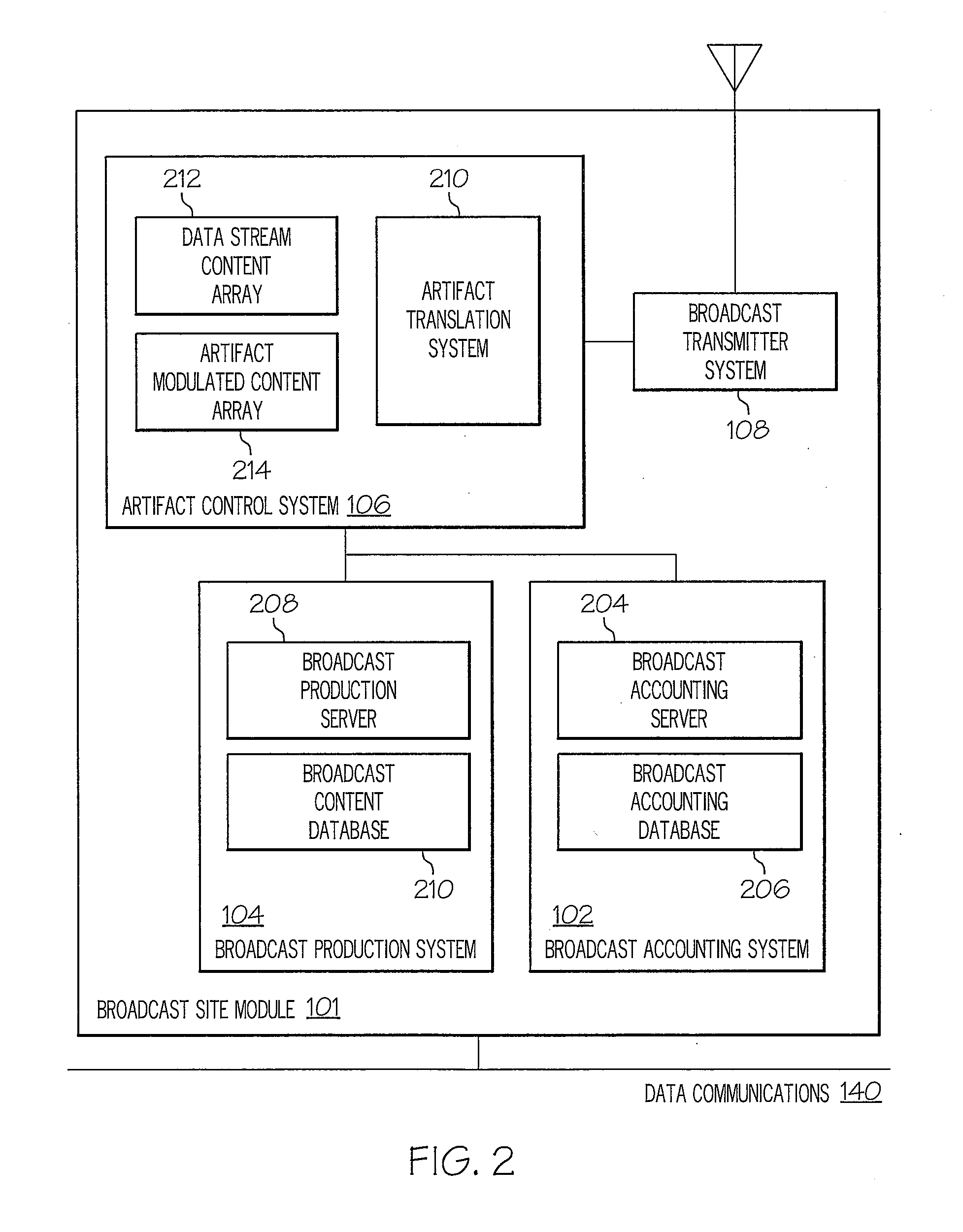Method, system and program product for broadcast advertising and other broadcast content performance verification utilizing digital artifacts
a technology of broadcast advertising and artifacts, applied in the field of radio frequency spectrum broadcasting systems, can solve problems such as system noise susceptibility, methodology failure, and digital watermark failure in efficacy, and achieve the effect of reducing the probability of system nois
- Summary
- Abstract
- Description
- Claims
- Application Information
AI Technical Summary
Benefits of technology
Problems solved by technology
Method used
Image
Examples
Embodiment Construction
[0035] In the following detailed description of exemplary embodiments of the invention, specific exemplary embodiments in which the invention may be practiced are described in sufficient detail to enable those skilled in the art to practice the invention, and it is to be understood that other embodiments may be utilized and that logical, architectural, programmatic, mechanical, electrical and other changes may be made without departing from the spirit or scope of the present invention. The following detailed description is, therefore, not to be taken in a limiting sense, and the scope of the present invention is defined only by the appended claims. In particular, although the preferred embodiment is described below with primary respect to a radio broadcast system, it will be appreciated that the present invention is not limited to such implementations, and may be implemented in radio, television, Internet, cellular, Wi-Fi, Wi-MAX, satellite, local area network, wide area network, a ...
PUM
 Login to View More
Login to View More Abstract
Description
Claims
Application Information
 Login to View More
Login to View More - R&D
- Intellectual Property
- Life Sciences
- Materials
- Tech Scout
- Unparalleled Data Quality
- Higher Quality Content
- 60% Fewer Hallucinations
Browse by: Latest US Patents, China's latest patents, Technical Efficacy Thesaurus, Application Domain, Technology Topic, Popular Technical Reports.
© 2025 PatSnap. All rights reserved.Legal|Privacy policy|Modern Slavery Act Transparency Statement|Sitemap|About US| Contact US: help@patsnap.com



